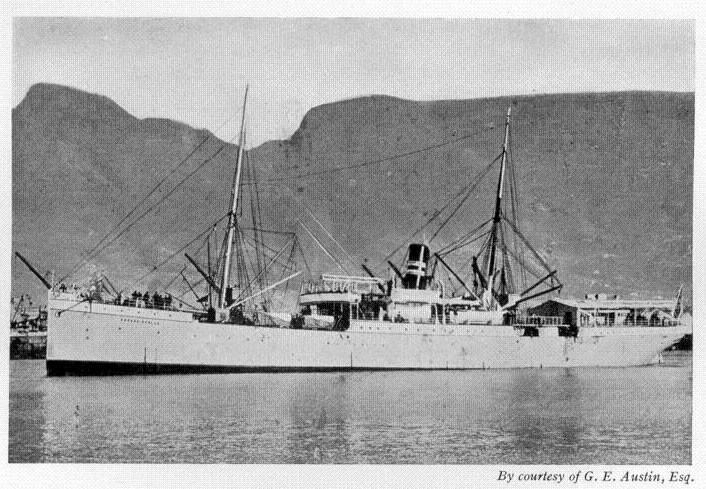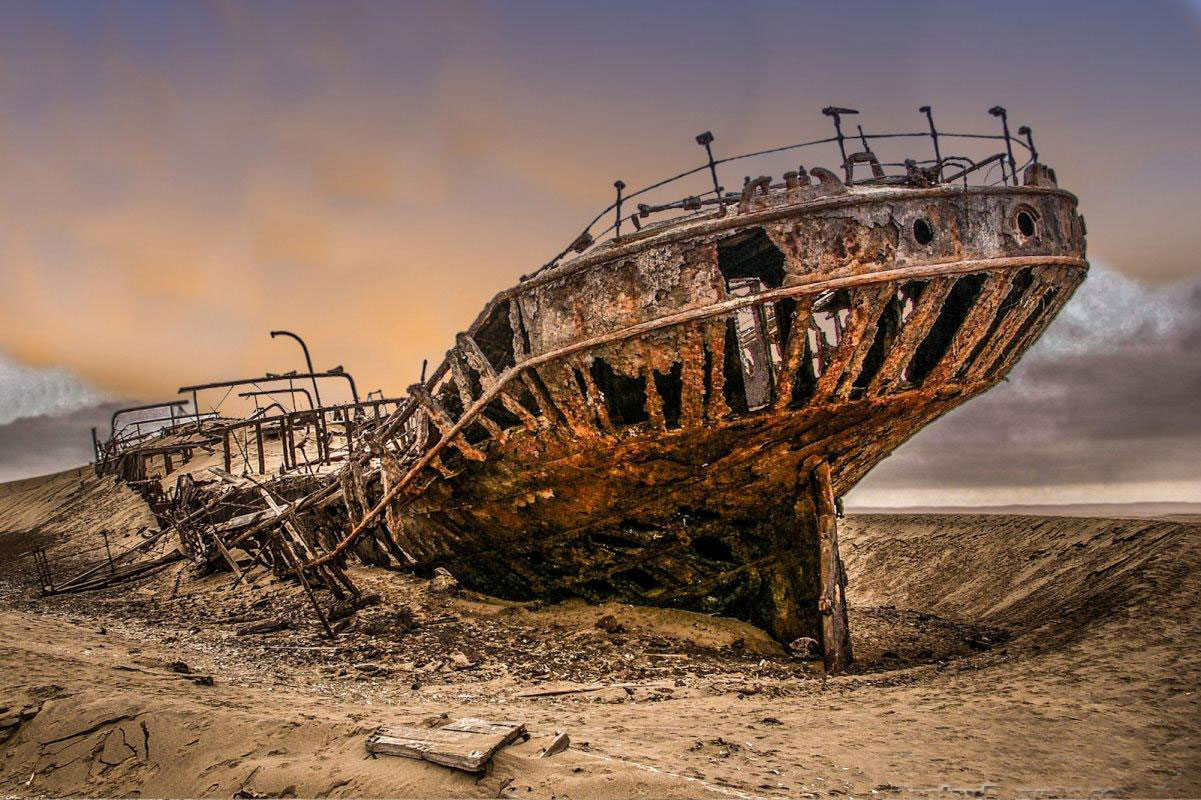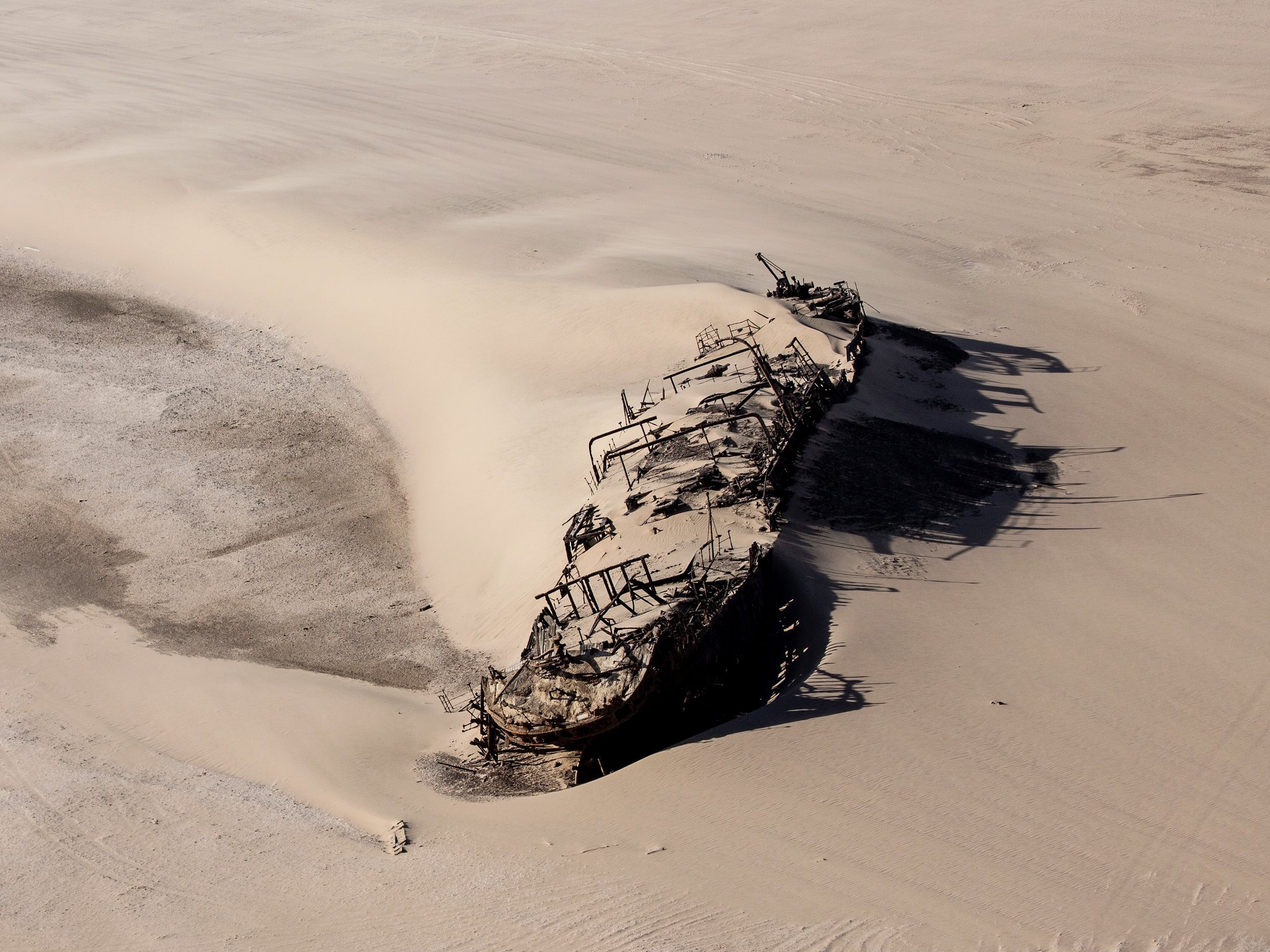Eduard Bohlen - the wreck
that sails desert sands in Namibia
The remains of rusted hulk of the Eduard Bohlen is located around 400 m from the
Atlantic shoreline in Namibia, surrounded by the sand of the Namib Desert. It is
probably the most photographed shipwreck in Namibia. Although it does not lie on
the Skeleton Coast, it definitely contributes to the sense of adventure and
danger for which the wild, Namibia's coastline has become famous.
Although photos of the wreck tell the stories of adventurous safaris and treks
around Namibia, the wreck itself has an interesting story to tell.

The vessel registers shows that there were two ships named Eduard Bohlen built.
The first Eduard Bohlen was built in 1889 for the Woerman Line, but ownership
was immediately transferred to the Deutsche Ost-Afrika Line and the ship was
renamed Reichstag. The second Eduard Bohlen was a combination of passenger liner
and cargo carrier. She was built by Blohm and Voss, in Hamburg, also for the
Woerman Line. She was launched on 23 October 1890, and delivered on 28 January
1891.
From 1891 the Eduard Bohlen began to ply the route between Germany and West
Africa, the first German steam ship to transport mail along the route. She would
continue to do so until 1895.
On 20 February 1895, Adolph Woerman, the African Steam Ship Company and the
shipowner and shipping agent John Picard Best, founded the Cie. Belge Maritime
du Congo to exploit opportunities on the lucrative trade route between Europe
and Africa. The Eduard Bohlen was transferred to the new company. On 6 March
1895 she sailed under Belgian flag for the first time, from Antwerp to the
Congo.
In 1898 she was transferred back to the Woerman Line and again sailed under
German flag. It was under this flag that the first of her Namibian stories can
be told.

In 1904 at the beginning of the
Herero uprising, the German Schutztruppe took a
decision to transfer Hereros living in Swakopmund , and those prisoners captured
during the first days of the uprising onto the Eduard Bohlen, which was anchored
off Swakopmund. Unsure of what to do with 282 male prisoners, the German
authorities decided to offer the male prisoners to South African labour
contractor A. Hewitt as workers for the mines.
Hewitt was prepared to accept the prisoners, but refused to pay the 20 Mark
customs duty per labourer. He reasoned that as the labourers men were already at
sea and technically outside the customs area, the duty should be waived. Once
the colonial administration agreed, the Eduard Bohlen set sail on 20 January
1904 for Cape Town, technically becoming a slave ship.
On 5 September 1909, the Eduard Bohlen once again made the history books. The
ship was due to offload equipment for the diamond diggers near Conception Bay on
her voyage from Swakopmund to Table Bay. However due to heavy fog she ran
aground on a sandbank about 100 meters from the beach. After some of the cargo
and equipment aboard the Eduard Bohlen was unloaded, the marine vessel Otavi
attempted to tow the Eduard Bohlen from the sandbank. The sandbank had different
ideas about its prize, and so, when the attempt failed, the 30 passengers
disembarked and were transported to
Swakopmund.
Over the next ten days, according to reports, so much sand settled around the
Eduard Bohlen that it was possible to walk from the beach to the stranded ship
at low tide.

As the sand of the Namib crept into the sea the Eduard Bohlen slowly became
landlocked, but this was not yet the end of the story. Diamond miners in the
vicinity decided that she was ideally located and perfect for a hotel. In fact,
the manager of the mine was allocated the captain's quarters.
When mining operations ceased the Eduard Bohlen was finally abandoned to the
sands.
Today the Eduard Bohlen lies several hundred meters inland. This is seen by many
as proof of the expansion of the Namib into the sea, and a warning to all ships
that the coastline of Namibia is always changing.
There is a final legend of the Eduard Bohlen, that the skeletons of crew members
who drowned, lie beneath the sands that surround her. Fortunately for the crew,
but unfortunately for the travellers who come to see her, this is not true:
nobody drowned when she was stranded.
Perhaps the ghosts that people sense are nothing more than warm gusts of desert
winds and memories of times and adventures long gone.
See a
full list of Namibian coast shipwrecks.
Contact & information:
E-mail:
info@namibweb.com
Reservations are only accepted in
writing: by fax or via e-mail.
Final availability confirmation: in writing: by fax or via e-mail.
Terms & conditions,
Payment options and
Cancellation
policy



Page created and serviced by

www.namibweb.com
Copyright © 1998-2025
namibweb.com - The online guide
to Namibia
All rights reserved |
JOIN
|
VIDEO PORTFOLIO
|
VIDEO/PHOTO COLLECTION
Telegram
| YouTube |
Blog
Page is sponsored by ETS &
Exploring Namibia TV
Disclaimer: no matter how often this page is updated and its accuracy is checked,
www.namibweb.com and ETS
will not be held
responsible for any change in opinion, information, facilities, services,
conditions, etc. offered by
establishment/operator/service/information provider or any third party



